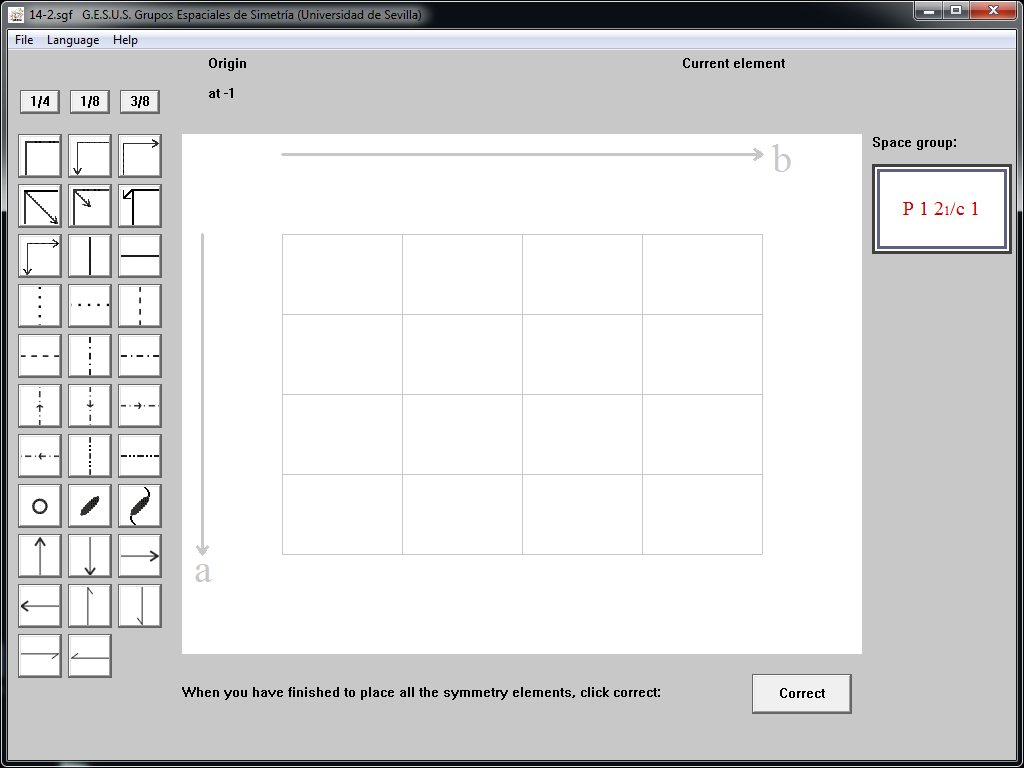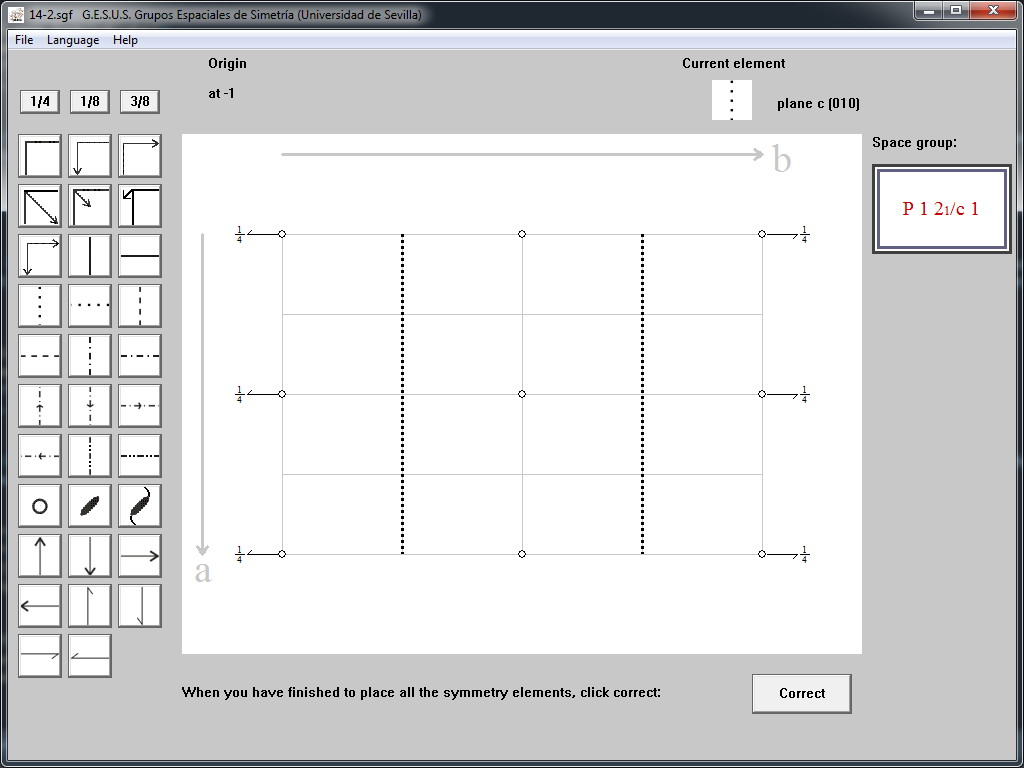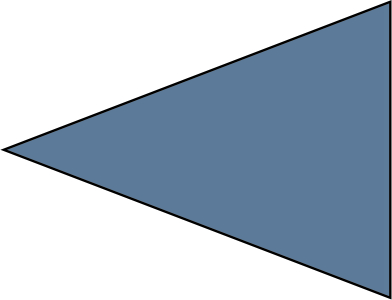Example of solving of a Space Groups with GESUS "by name"
b. Another file from the exercise library is opened, e.g. 14-2.sgf
A 4x4 rectangular grid similar to the previous exercise appears in the work window, but without atomic representations and with the indication of the Space Group P 1 21/c 1.

Fig. 27.- Work interface of GESUS "by name"
The origin is given as (centre of symmetry), we can place this element in the upper left corner of the grid. Then, more elements appear by the combination of even-order axes and perpendicular planes.
The orientation of the twofold screw axis and the "c"-plane, being in the second place (marked by the identity) is parallel and perpendicular to "b" respectively.
The twofold screw axis is shifted 1/4 of "c" concerning the origin by the translational component of the glide plane "c" and this, in turn, is shifted 1/4 of "b" to the origin by the translational component of the twofold screw axis. So the arrangement of the symmetry operators would be easily completed by combination with the perpendicular translations to both elements.

Fig. 28.- Space Group nº 14-B solved"
The centres of symmetry are positioned at the intersections between twofold screw axis and glide planes "c", although with the corresponding displacement that both operators generate.



